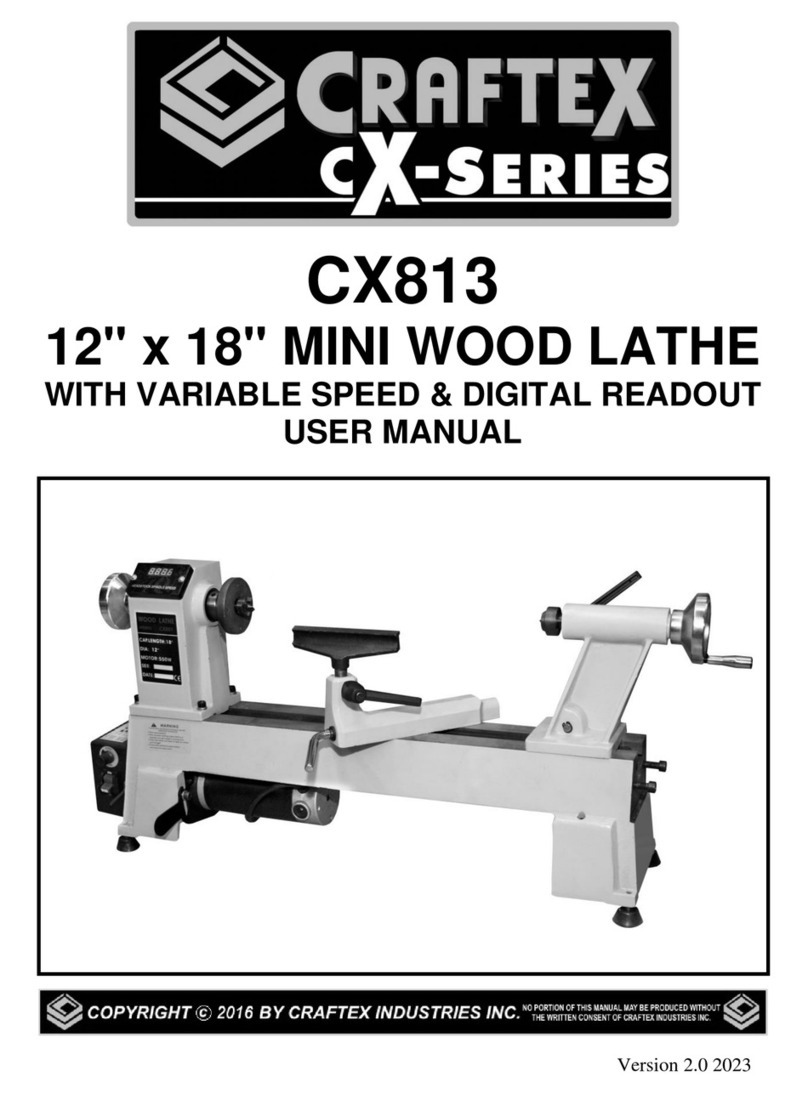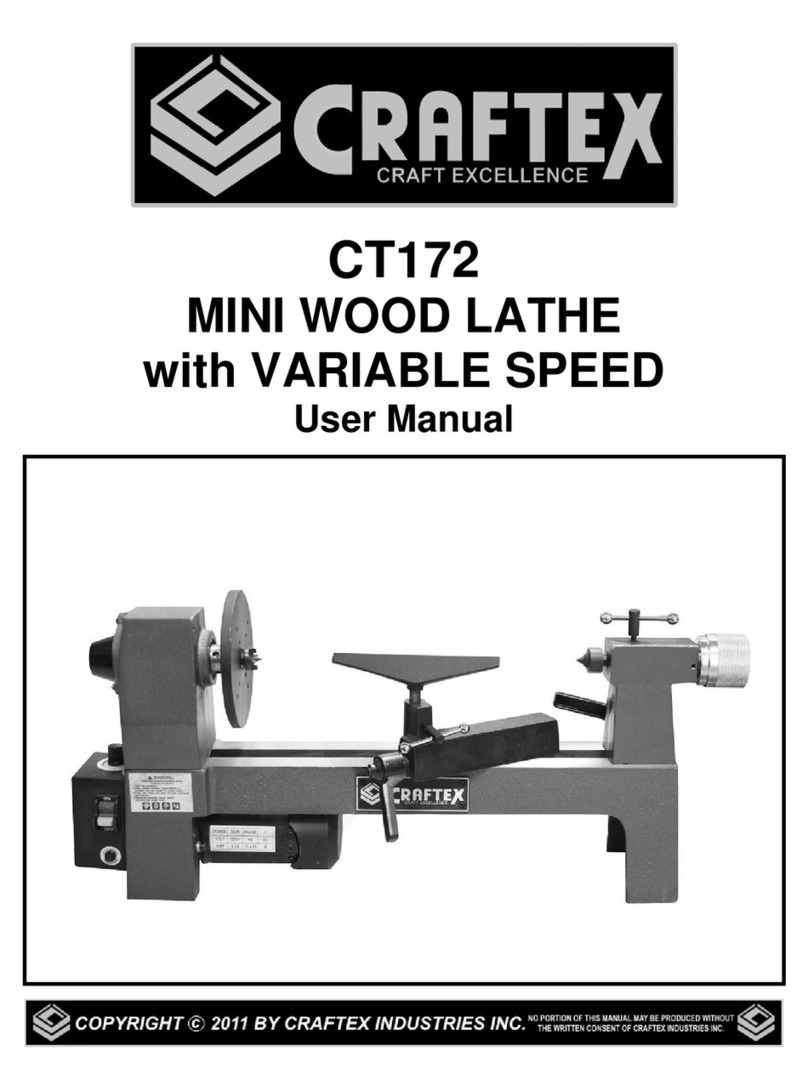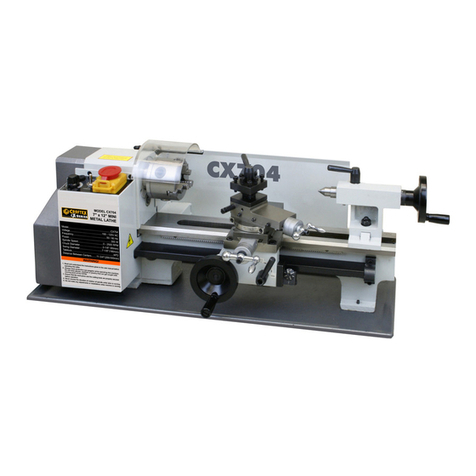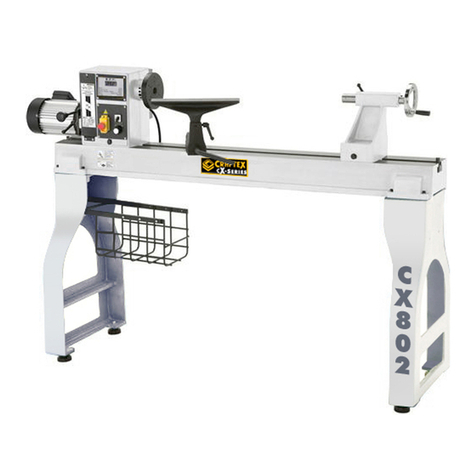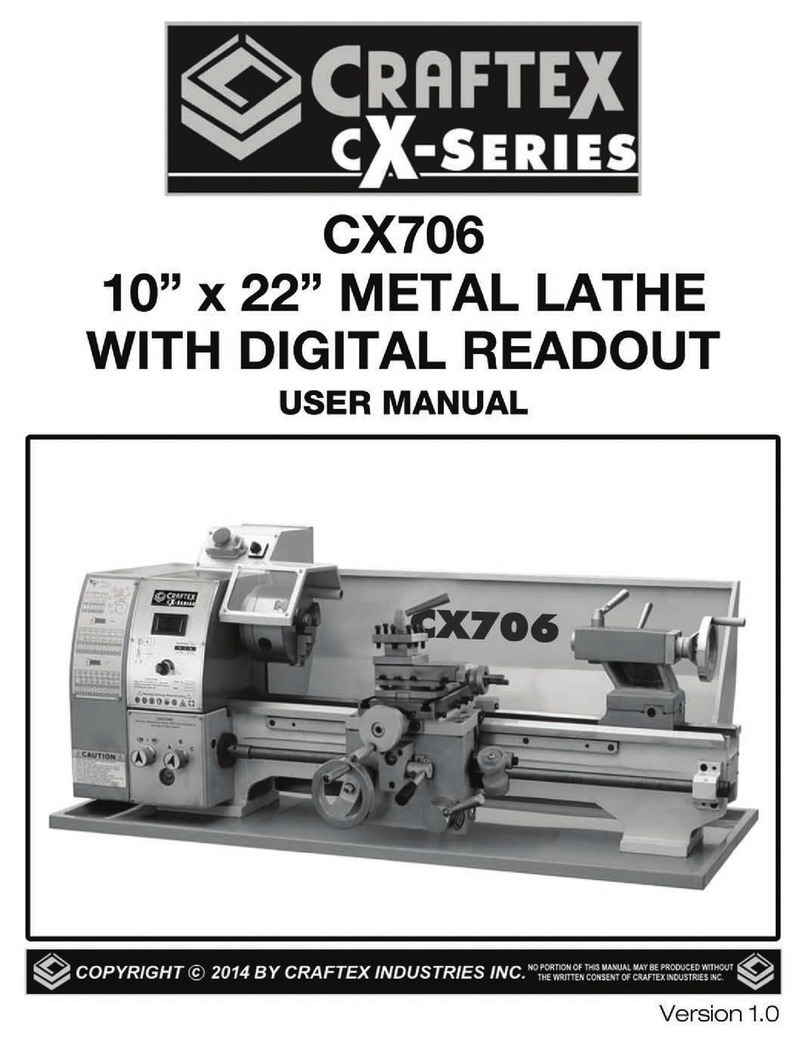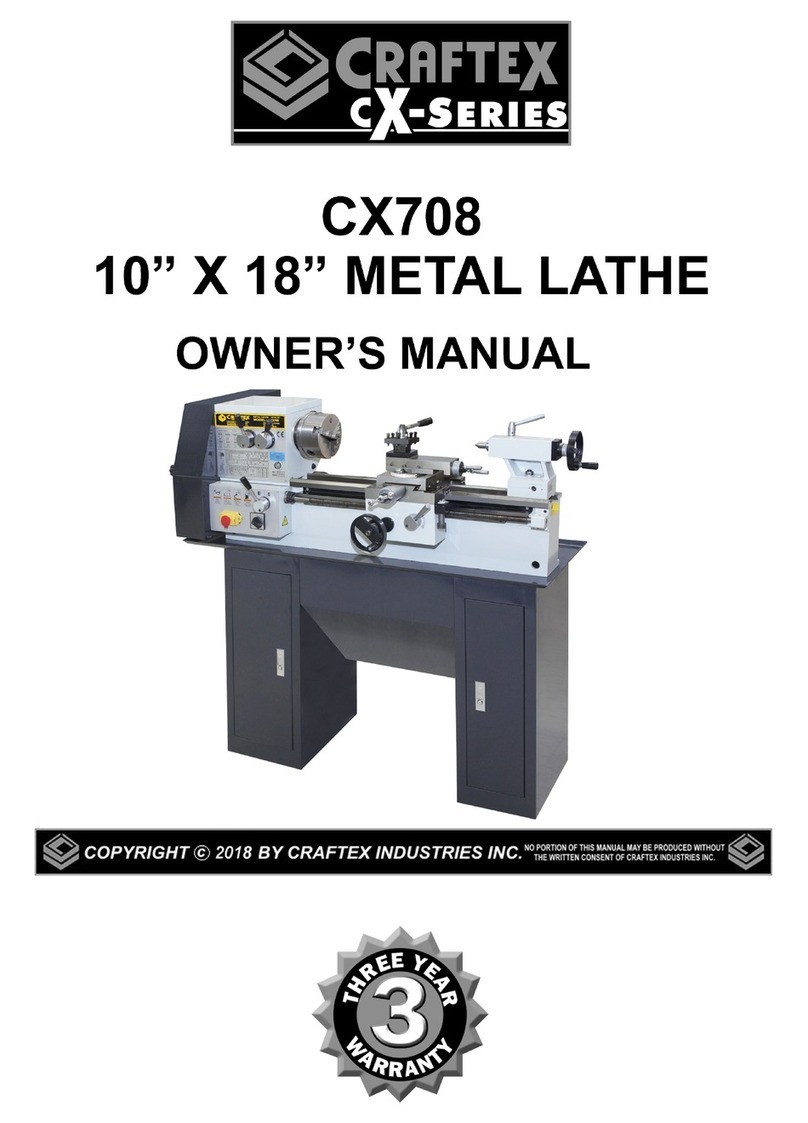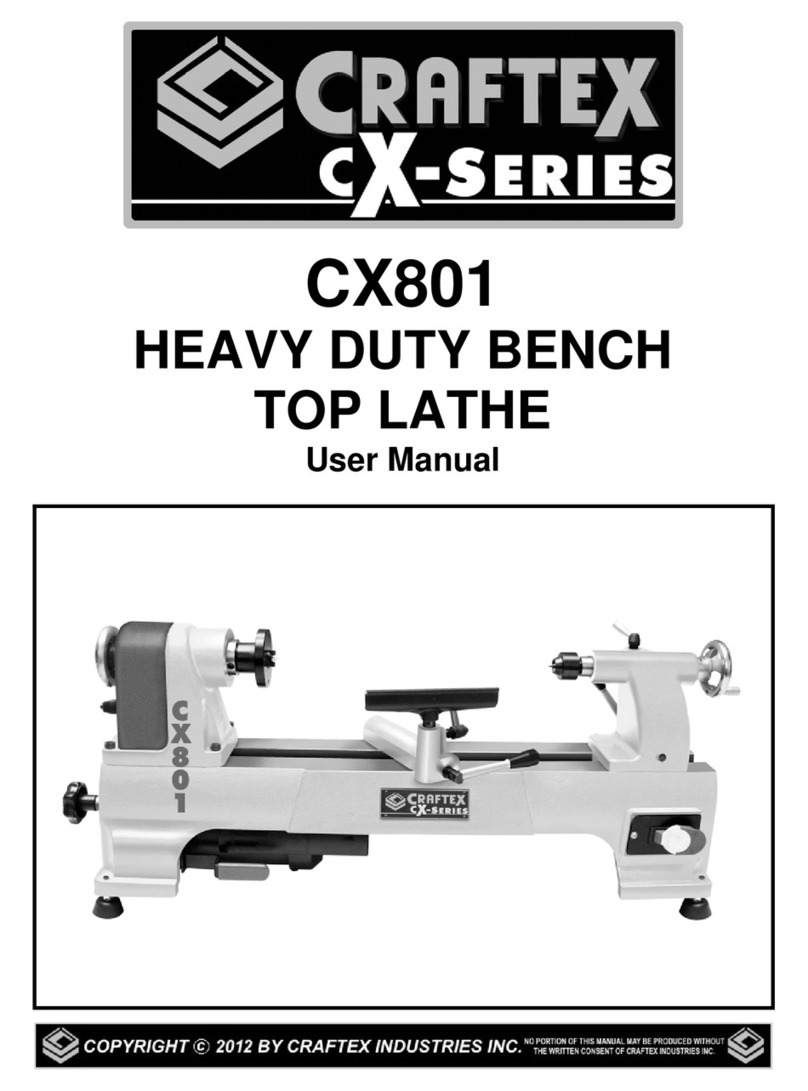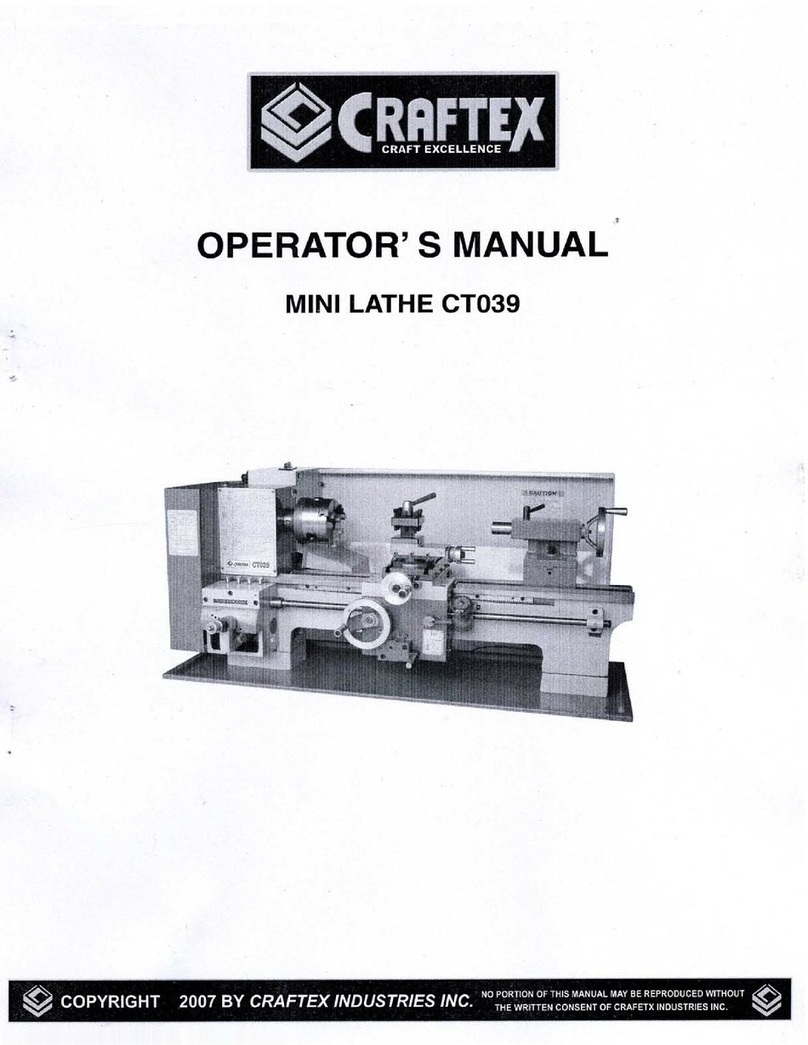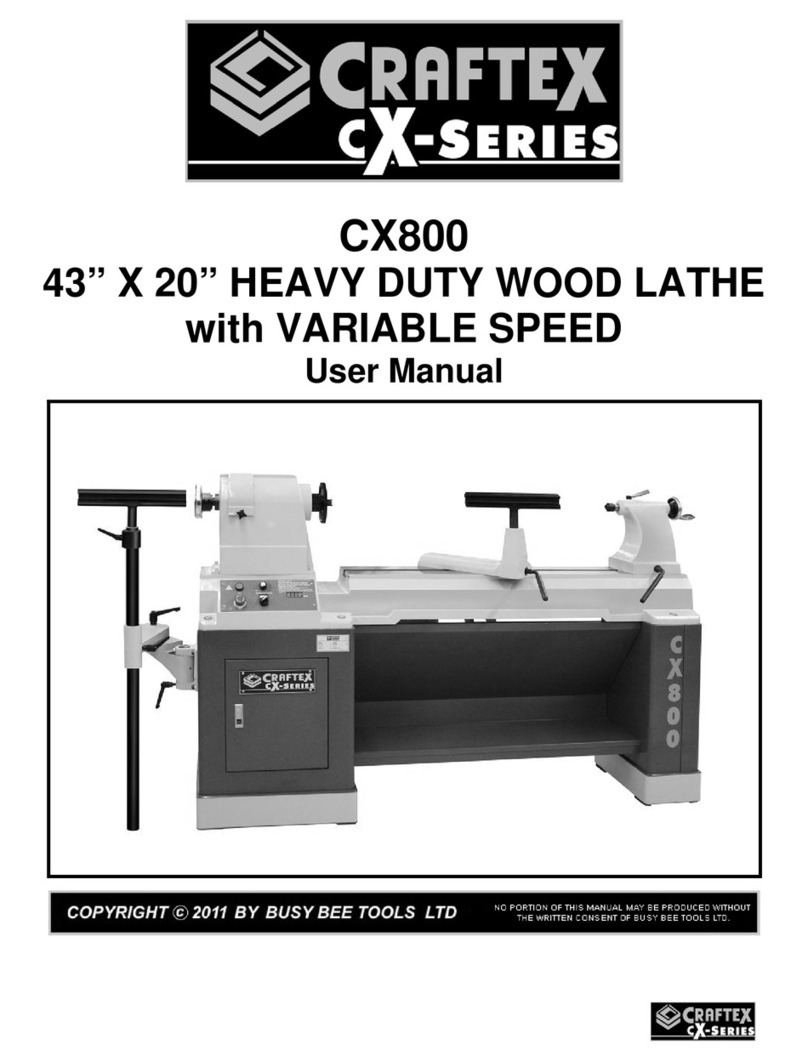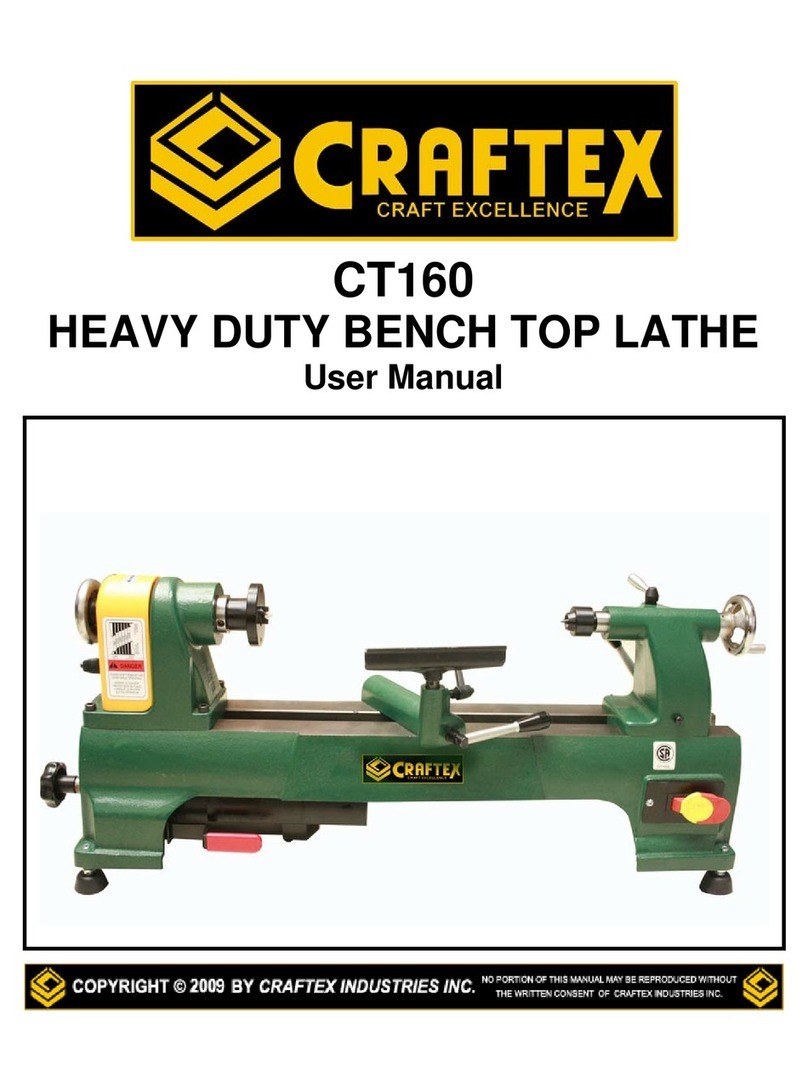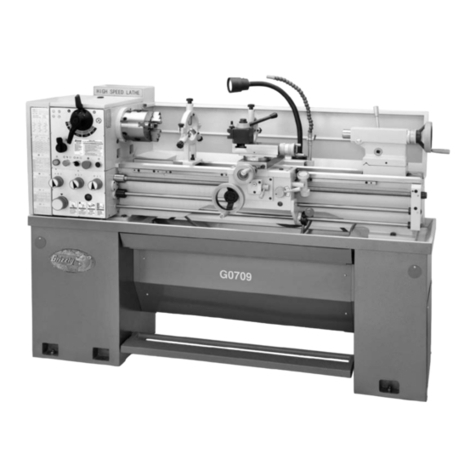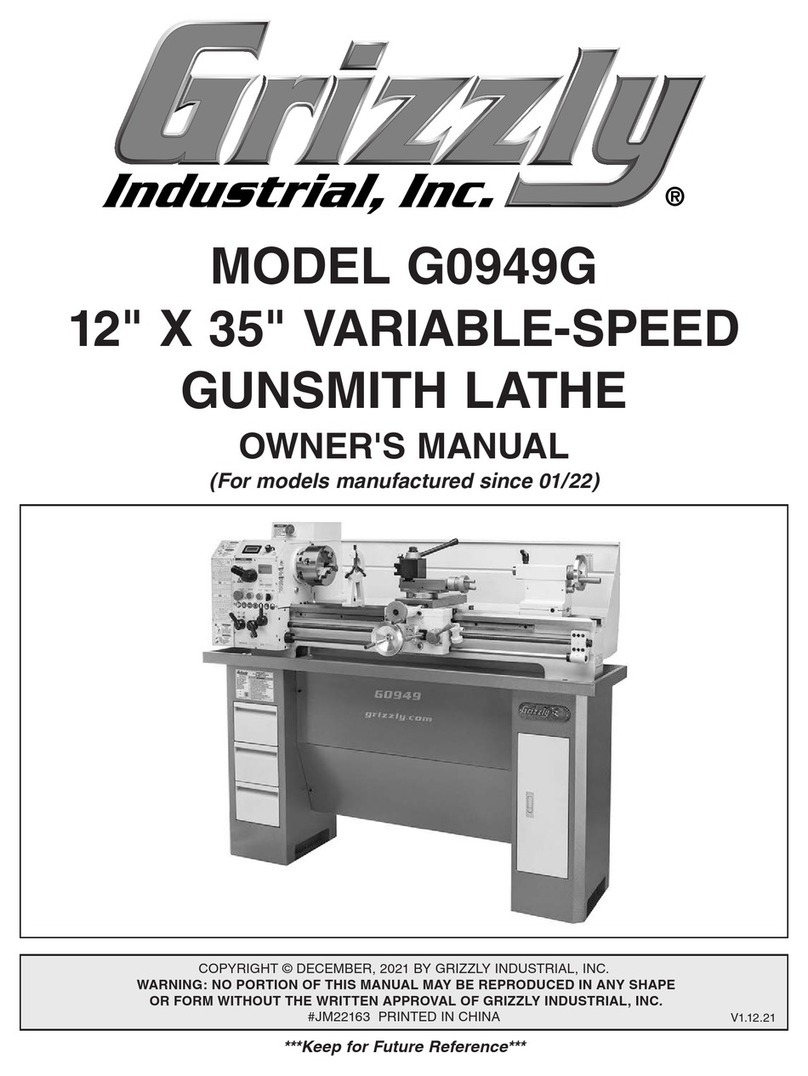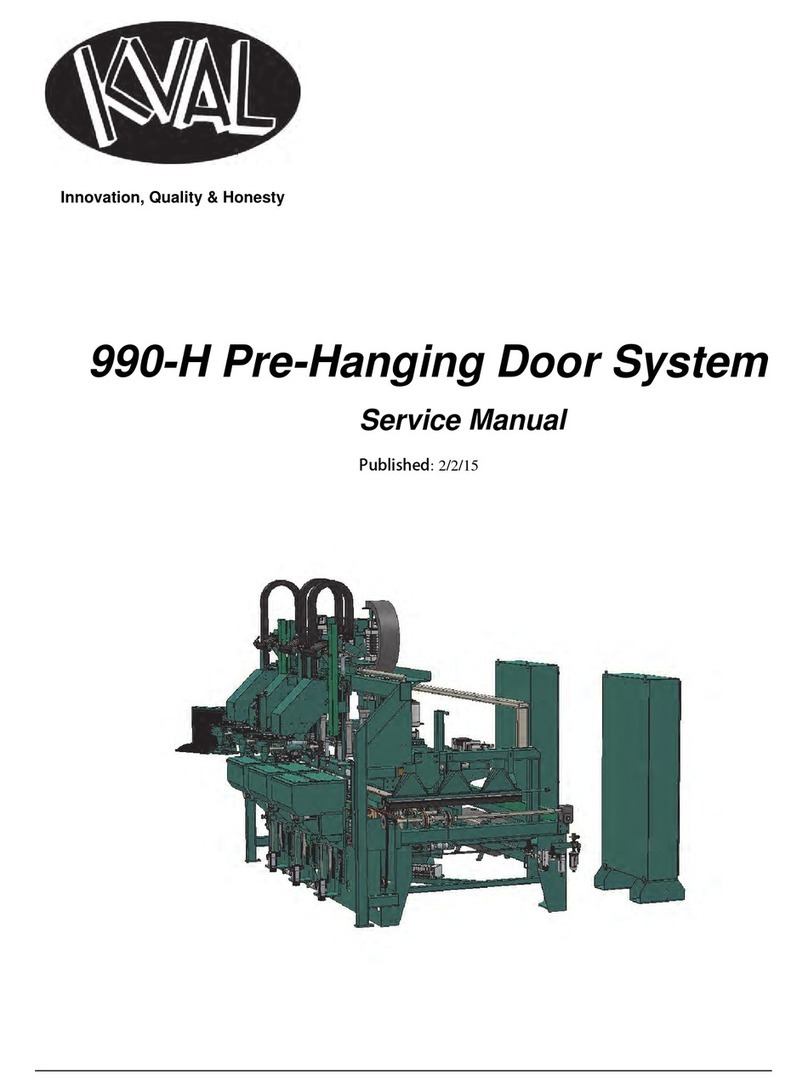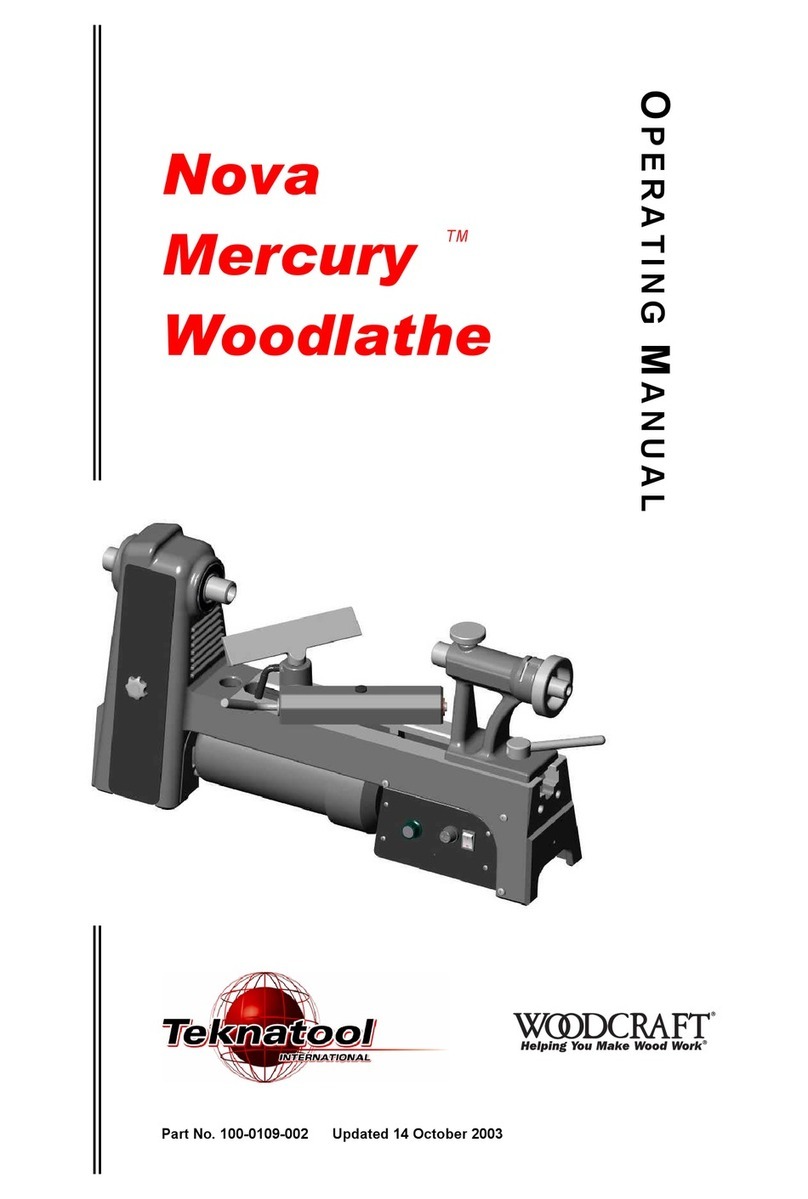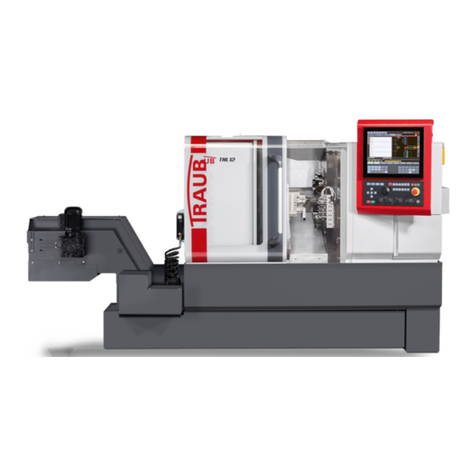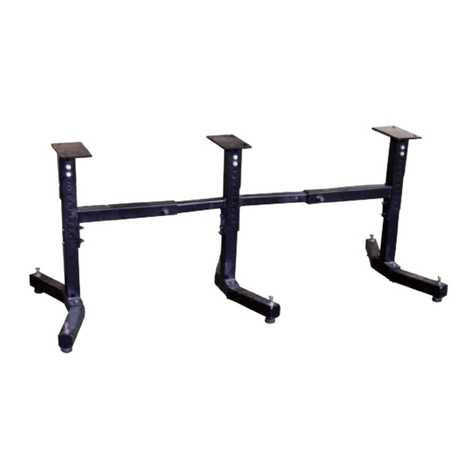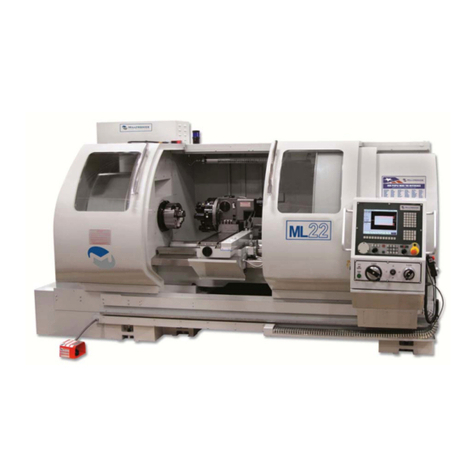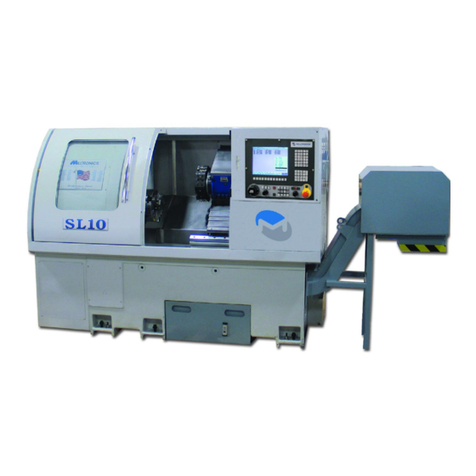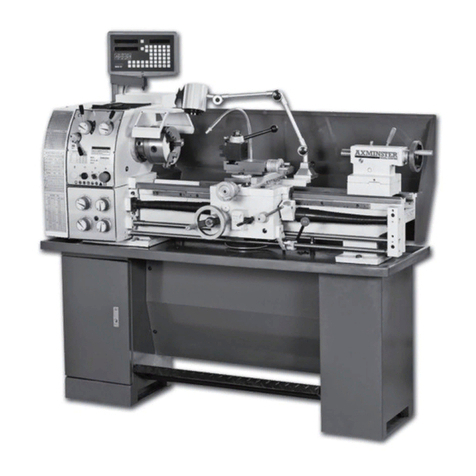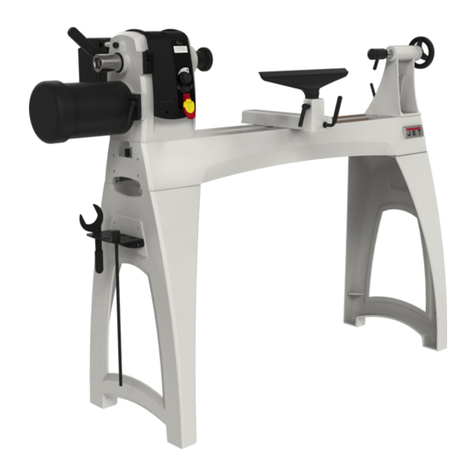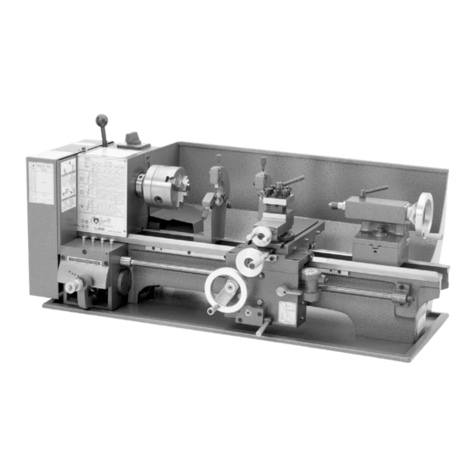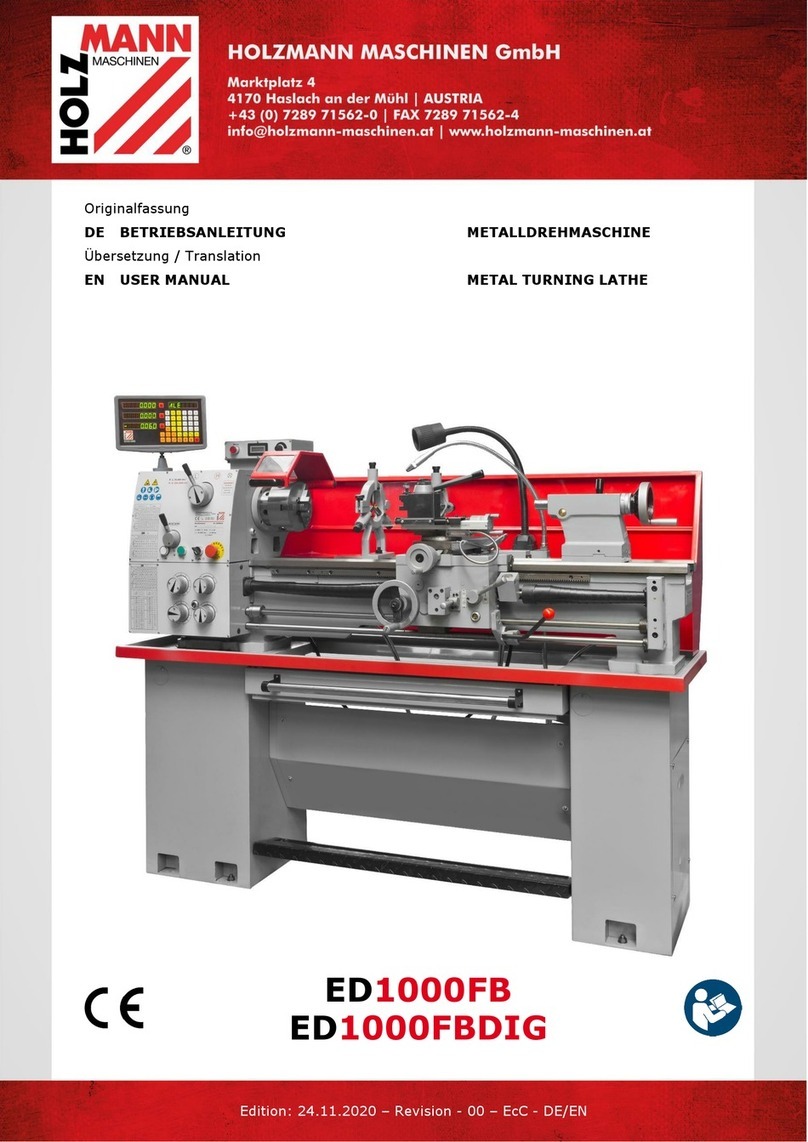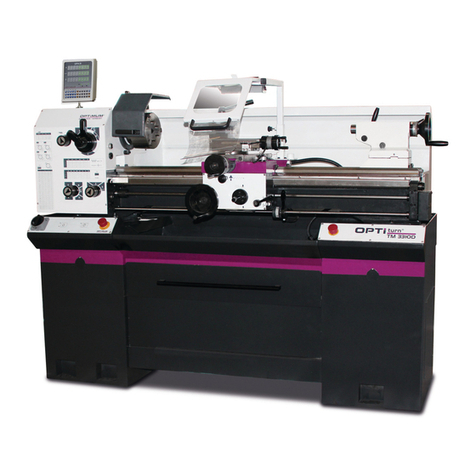
Introduction
As part of the growing line of Craftex woodworking equipment, we are proud to
offer the B1979C Mini Metal Lathe. The Craftex name guarantees Craft
Excellence. By following the instructions and procedures laid out in this owner’s
manual, you will receive years of excellent service and satisfaction. The B1979C
is a professional tool and like all power tools, proper care and safety procedures
should be adhered to.
B1979C Mini Metal Lathe is a very practical machine which has been constructed
in a simple and logical way. This machine is perfect for the home workshop,
school workshops and for the instrument industry.
Installation and operation of the B1979C is very simple.
By changing gears, B1979C can cut metric threads.
The main spindle is powered by a 1/3 HP (250 W) permanent magnet DC motor
driven by a synchronous toothed belt. The variable speed mechanism allows free
adjustment of speed to achieve specific results of the work at hand.
The Lathe has 2 gears, a top (high) gear and a bottom (low) gear. The range of
speed with the high gear is 460 – 2500 RPM, while the low gear ranges from 200
– 1150 RPM, thus making this little machine quite the versatile tool.
Precision cast iron construction
Features
Auto longitudinal feed
Collars calibrated in inches
The ideal tool for model engineers and metal working hobbyists
Complete with precision 3-jaw chuck, change gear set, wrenches and allen keys
Swing Over Bed: 7”
Specifications
Swing Over Cross Slide: 4 ½”
Distance between Spindles: 8 ¼”
Spindle Taper: MT3
Bore: 13/16”
Spindle Speed Range: 200-2500 RPM
Threading Range: Inch – 12-48 TPI, Metric – 0.4-2.0 mm
Tailstock Taper: MT2
Tailstock spindle travel: 1 7/8”
Motor: 1/3 HP, 110V, Variable Speed
Size of Machine: 28” x 11 3/8” x 11 ¼”
Approx. Shipping Weight: 47 kg
Carton Size: 12” x 13 ½” x 27”
